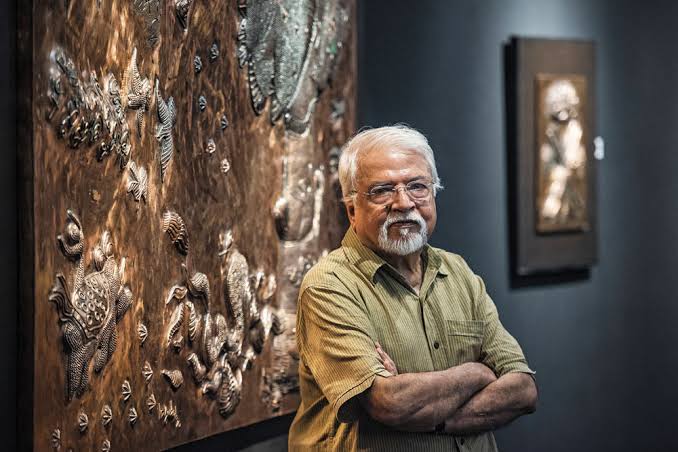Ved Prakash Bhardwaj
S G Vasudev’s art opens different layers of life in his paintings. In this process of seeing and opening life, he keeps the physical condition of man as well as his psychological condition in the centre. The artist focuses on the interrelationship between all living and non-living elements of the world and the influence of the environment on the conditions of human life. Folklife with its cultural dimensions is reflected in the artist’s copper plate works. SG Vasudev’s solo exhibition ‘Containing Multitudes’ displayed at the Bharat Art Space Gallery in Gurugram reflects this intricacy of art. Art critic Johnny ML is the curator of the exhibition.
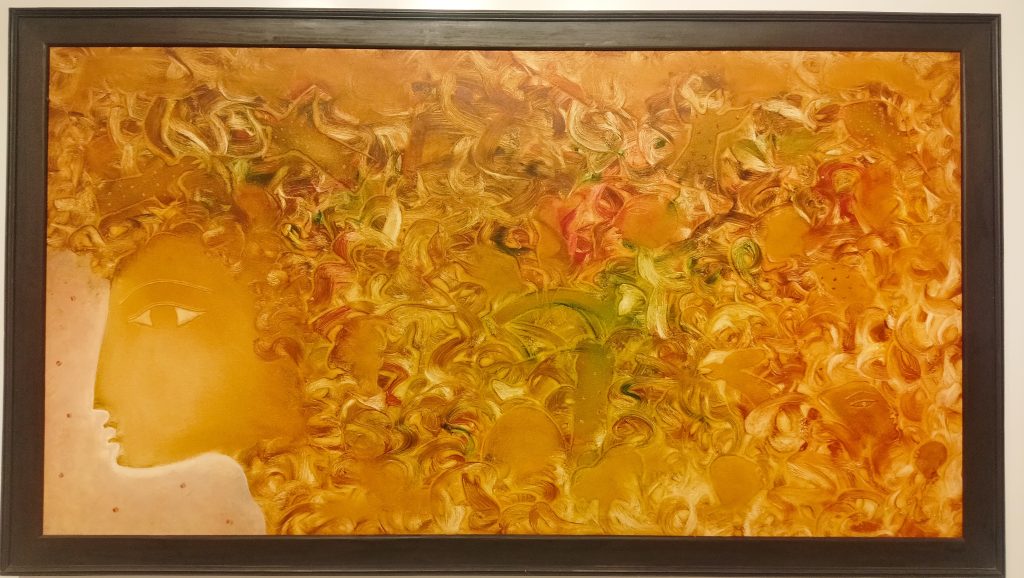
Experimentation with different mediums
One of the challenges for the modern artist is to understand and express life in its contradictions. No one form of art, one style, or one medium is sufficient for this. That is one of the reasons Vasudev works with different mediums. Continuous experimentation and change can be seen in his works. Sometimes the change seen in his work is a result of the medium or the art material, which is fascinating. For example, when he does relief work on copper plates, he approaches the folk arts of South India. It is a different matter that he gives a new identity to folk arts via his composition style.
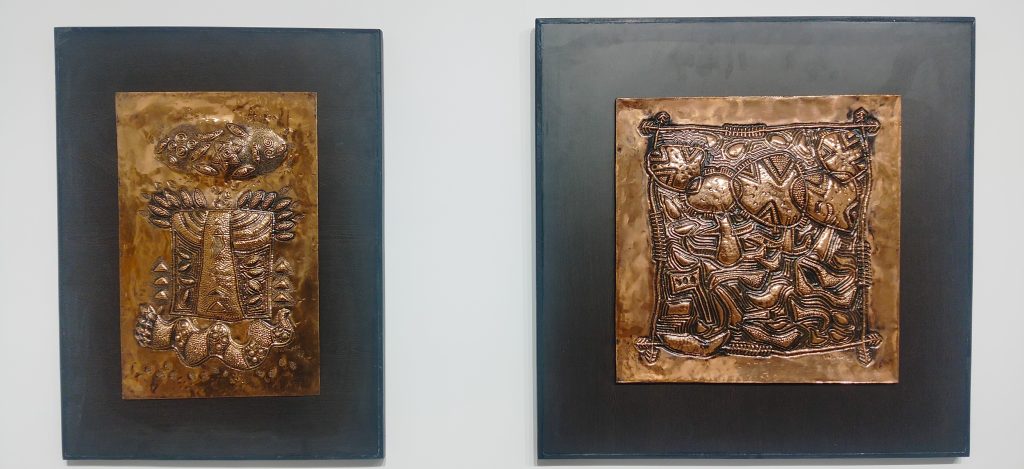
S G Vasudev’s unique abstraction
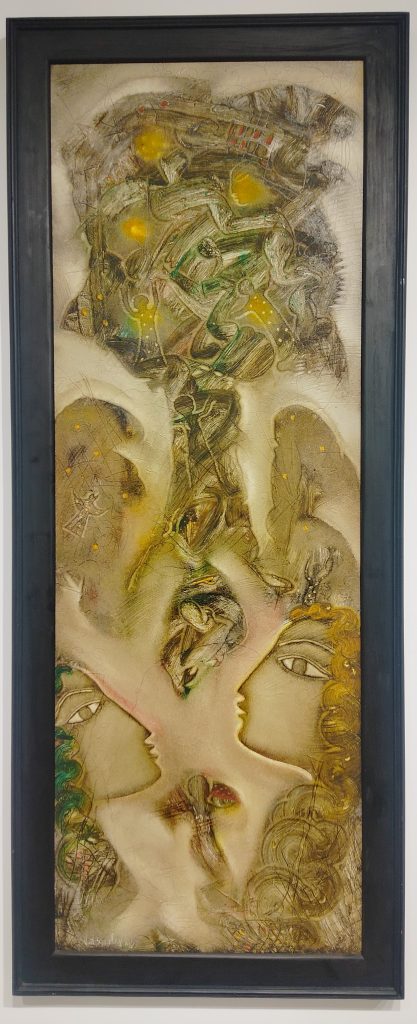 If we look at the paintings included in this exhibition, there are more such paintings in which there is more abstraction. Vasudev’s identity has been that of a figurative artist, but now abstraction has come in a more effective form in his works. There is often a face at the centre of his paintings, around which he creates figures with the effect of abstraction. In this way, he avoids the meaning of the picture being limited to the face. Few other compositions of his appear to have many faces. In such paintings, he adopts an abstract style instead of a completely realistic style.
If we look at the paintings included in this exhibition, there are more such paintings in which there is more abstraction. Vasudev’s identity has been that of a figurative artist, but now abstraction has come in a more effective form in his works. There is often a face at the centre of his paintings, around which he creates figures with the effect of abstraction. In this way, he avoids the meaning of the picture being limited to the face. Few other compositions of his appear to have many faces. In such paintings, he adopts an abstract style instead of a completely realistic style.
Most of the paintings in the exhibition are abstract paintings, although their abstraction is a slightly altered form of the real world. For example, while creating a tree in an abstract style, he still maintains the possibility of imagining its real image. Not only this, he makes the tree come alive by creating human faces on it. The titles of his paintings Tree of Life, and Theatre of Life indicate how important the dramatic moments of human life are. Dramatization here does not mean the mere presentation of a written story on stage. In the drama of life, everything is not pre-written and predetermined. Contingencies are central to the drama of life. Vasudev tries to reveal the uncertainties of life in his paintings. He has given the title “Theatre of Life” to many of his paintings that express similar sentiments. The other paintings are titled “Rhapsody”.
The motif of trees in S G Vasudev’s work
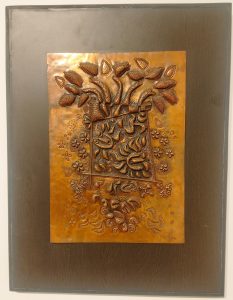
Trees are a major subject of Vasudev’s art. In many paintings, the tree is presented in both its real and abstract forms. He expresses the depth of human relationship with nature in many ways through the utilization of trees. In order to achieve this, he portrays humans and other creatures alongside trees, blending in with each other. In his copper reliefs, he often uses motifs from folk art with trees.
Apart from this, the subjects of many of his paintings are women. By keeping the woman in the centre, he gives new expression to the emotional relations and feelings of life.
There are also some tapestries in this exhibition. The structure is similar to that of a painting. One such work is titled Human Space. In this, the use of many abstract motifs in one face makes the picture rich in meaning.
Monochromatic colours
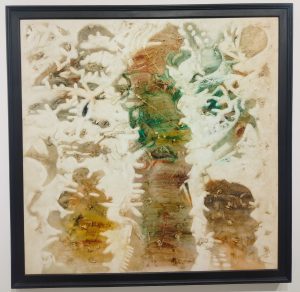 Vasudev’s colour palette is mostly monochromatic. He adds depth to the picture by using different tones of that one colour. In some paintings, he uses other colours but he does not disturb the main colour of the picture. He works in oil colours. White colour has been used more in some of the paintings included in the exhibition. By the way, he mostly uses orange, blue, brown, and yellow ochre colours. His colour palette extends its range only to a few particular paintings.
Vasudev’s colour palette is mostly monochromatic. He adds depth to the picture by using different tones of that one colour. In some paintings, he uses other colours but he does not disturb the main colour of the picture. He works in oil colours. White colour has been used more in some of the paintings included in the exhibition. By the way, he mostly uses orange, blue, brown, and yellow ochre colours. His colour palette extends its range only to a few particular paintings.


